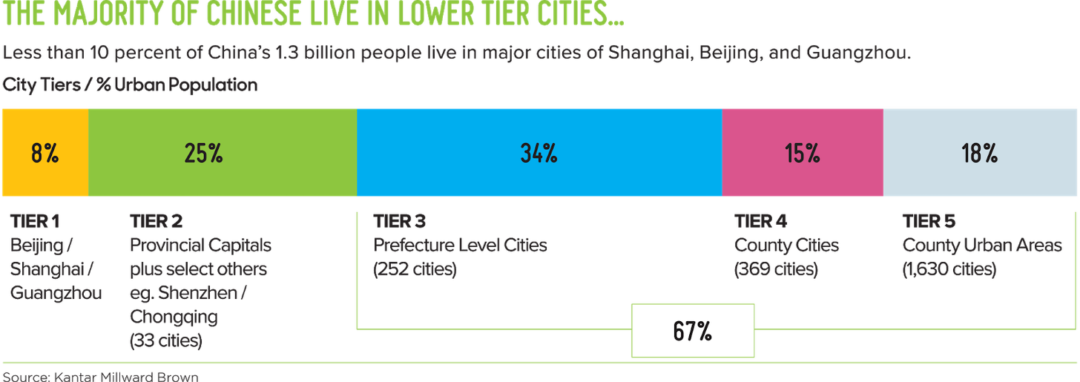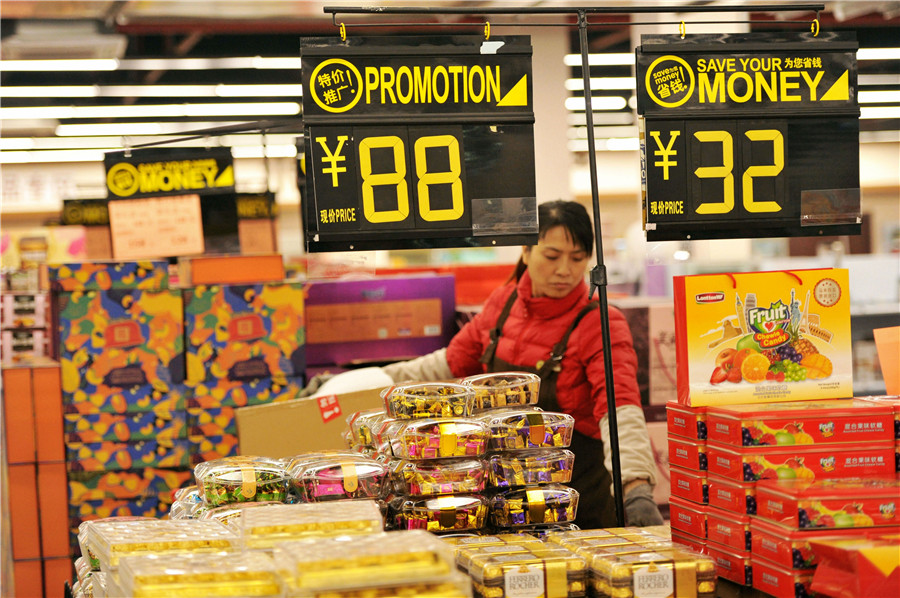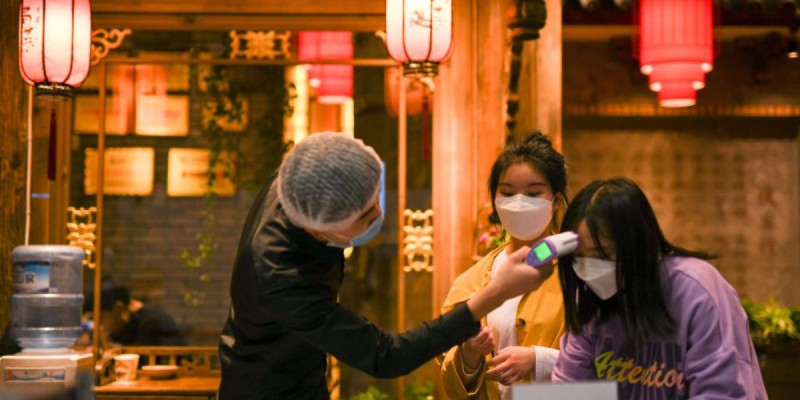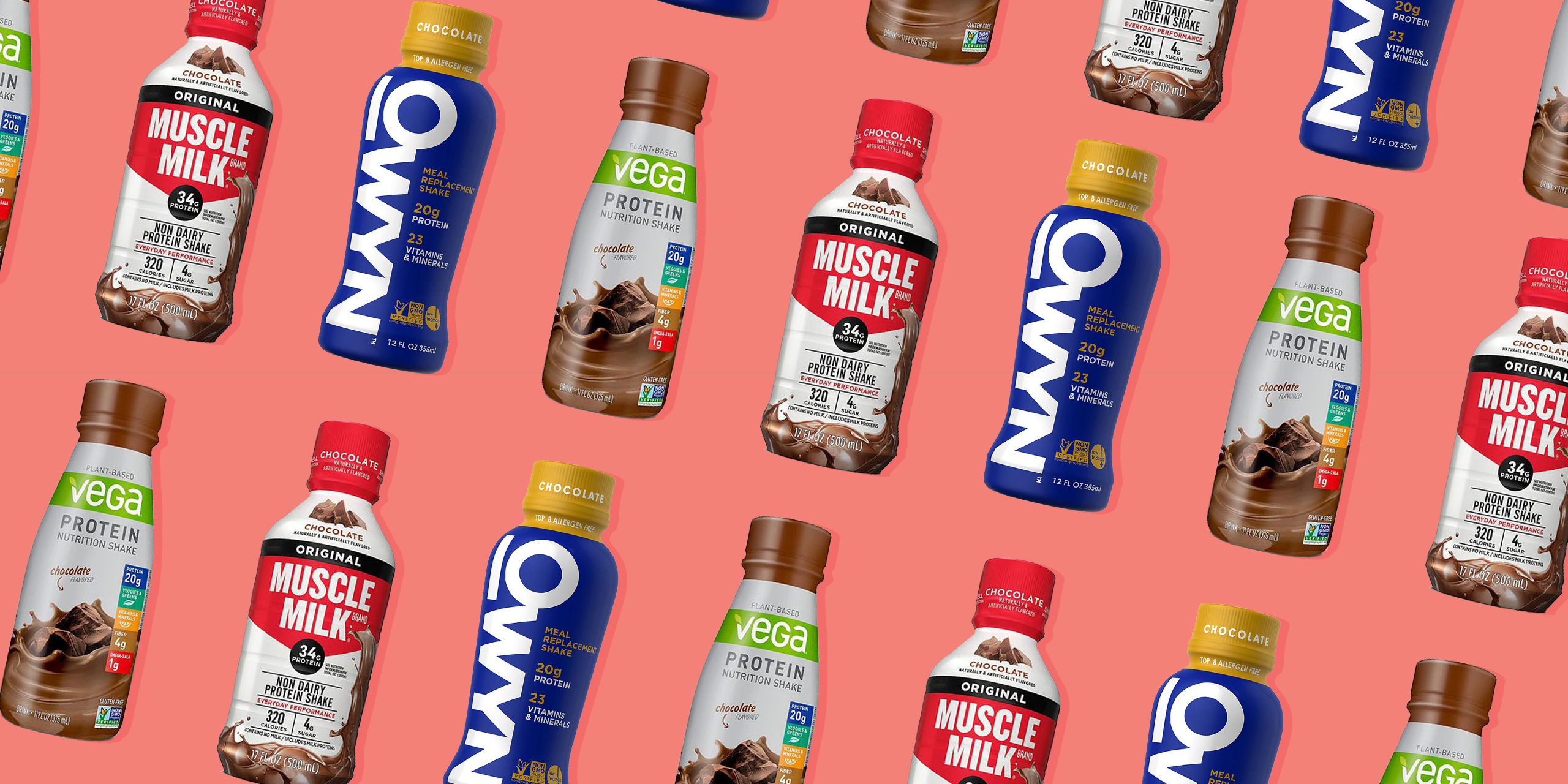China’s tea culture has undergone drastic changes in recent years as companies have rebranded the once-staid beverage as a high-end, fresh, and healthy consumer experience. The resulting products, known colloquially as “new-style teas,” are big business.
Admin
5 Export Opportunities to China in 2021
China’s economic planners have set a 6% GDP growth target for 2021. China, it appears, has shrugged off the worst of COVID-19. This has many brands asking:
Where are the export opportunities to China in 2021?
We sat down with AgencyChina’s Research & Strategy Manager, Michael Norris, who relayed what he and his team of Chinese market research professionals had found on a few recent projects.
Below is an edited transcript. If you like what you hear, you can sign up to arrange a free expert call with Michael Norris, now available till May 31. A unique chance to get some great first-hand China knowledge!
Top Export Product Opportunities in China
Editor: What product categories do you think have the best prospects in China this year?
Michael Norris: I think the pillars for imported brands in China will remain largely unchanged this year – skincare, haircare, pet care and nutrition continue to have strong tailwinds. Principally, the purchasing power of China’s middle-class continues to increase and there’s a universal desire among the type of middle-class consumers we work with to look and feel their best.
However, what we continue to advise new market entrants is China is now a level playing field. That is to say, the ‘halo effect’ imported brands once enjoyed has faded away. As such, brands need to do their homework before they enter.
Top Export Product Niches in China
Editor: Drilling down, what niches do you expect to have strong growth this year?
Michael Norris: There are five niches I really like this year. The first is toothpaste, which is seeing ingredient and format innovation. This driven by a focus on dental beautification – straight teeth and a bright smile.
The next is cat food. Cat ownership is growing faster than dog ownership, and, if current trends continue, cats will become China’s most preferred pet in a year or two.
A further changing preference is perfumes and fragrances. Fragrances are increasingly signifier for style and taste among China’s younger white-collar types, both male and female. Recognizing this demand, Tmall has even opened up a direct air route to carry over niche perfumes by air freight.
When it comes to personal style, we can’t go past hair. I like the prospects of a number of hair care niches, especially anti-breakage and strengthening shampoos. The China Association of Health Promotion and Education reckons that China’s premature hair loss population stands at a whopping 250 million, most of them between 20 and 40 years old. Any help brands can give here is undoubtedly welcome.
I know it’s bigger than a niche, but I do have to say it as it’s one of my favorites: male skincare and cosmetics. We expect the average number of skincare products male consumers to rise from 1.5 to 3.5 over the next five years, which will drive significant category growth.
Advice For Brands Entering China
Editor: What can brands do to keep up with changes in China’s consumer preferences?
Michael Norris: Top performing brands tend to have a strong sense of what they already know and what they want to find out about the consumer. They then craft a research agenda around those things to make sure they keep up to date. There’s a quick mental quicklist anyone can use to start their own research agenda.
- What are the three things you’d most like to know about your Chinese consumers current habits? How are these things important to your business?
- What are the three things you’d most need to learn about to prepare your business for the future?
- What evidence do you have about these things already? How would you rate the quality of that evidence?
- What plans do you have to update existing evidence or gather new evidence?
AgencyChina is a full-service agency, covering market research, marketing and e-commerce operations. That means we’re in a great place to help new and established brands at any point in their journey.
We can help size up an opportunity and build a business case, use consumer interviews to understand changing needs, create a distinctive brand in-market, or identify which parts of a brand’s e-commerce operations need some fine-tuning.
I always encourage folks to have an open dialogue with us. Let us know where you’re at, and we can see whether we’re a good fit.
3 Brands To Help You Understand Healthy Snacking In China
It’s no secret that China’s Post 90 and Post 95 consumers are turning towards healthier snacking. Healthy snacking in China represents a desire to treat oneself, minus the guilt of becoming a couch potato.
So, which brands deliver best on China’s healthy snack trend? We asked our e-commerce data insights manager, Teddy Wang, to give his top three picks. If you’d like to get more insights, book a free consultation with one of our experts here.
Trending Healthy Snack in China #1: Sugar-Free Yoghurt
The first trending healthy snack is sugar-free yoghurt. Last year, amid the pandemic, dairy products rose to prominence after local dairy lobbies put dairy products’ immunity benefits up in headlights.
Simple Love, a diary brand hailing from Guangzhou-based Honest Dairy, is a beneficiary of this trend. It produces a high-protein spoonable yoghurt, a classic plain spoonable yohgurt and a drinking yogurt. The name – Simple Love – comes from the fact the brands ingredient profile is exceptionally simple. The dairy range contains only high-quality milk and probiotics from Finland-based dairy company Valio.

Trending Healthy Snack in China #2: Cereal and Muesli
The next trending healthy snack is cereal and muesli. China’s consumers have been warming to cereals and muesli for a little while now, with names like Quaker, Calbee and Wangbaobao making their way into kitchen cupboards across China.

While cereals and muesli may seem old hat to overseas readers, for Chinese consumers the appeal lies in versatility – cereal can be eaten dry, combined with yoghurt, combined with fruit, added to warm milk or even used as part of DIY desserts.
If you’re thinking about bringing a cereal or muesli into China, you’ll need to understand and cater to what consumers appreciate – low sugar, baked oats with chunky pieces of dried fruit.
Trending Healthy Snack in China #3: Fortified Gummies
Fortified gummies, as typified by BUFFX, are Teddy’s third pick for trending healthy snack.
You might have noticed that we’ve previously written about BUFFX, as a challenger in the fortified foods and health supplements category.
By way of back story, BUFFX recognized that Chinese consumers are daunted by imported vitamin and supplement pill sizes. If you compare pills and caplets in China to overseas, you’ll find there is a demonstrable size difference. BUFFX understood this and designed a gummy supplement – the type that you might typically find for children.
These gummies have a taste and texture profile which is far more palatable to local consumers, and far closer to a snack than a supplement. Indeed, most consumers we’ve come across treat them as a snack – which is why they make this list.
What can you take away from this?
The biggest takeaway here is Chinese consumers want it all – the indulgence of snacking, high-quality ingredients, great taste, and low-calorific content. That sounds like a high bar, and it is.
The good news?
Chinese consumers are happy to pay a premium for brands that can deliver against their high expectations.
Speak to one of our experts to understand whether your brand meets the bar.
3 Misconceptions About Lower Tier Cities in China
China’s not a unified, single market. Rapid urbanisation has led to 113 cities with more than one million inhabitants. You may already know a few of China’s mega-cities. However, less than 10% of China’s population live in those massive metropolises. By contrast, over two-thirds of China’s population live in lower tier cities.

Unfortunately, even after a number of years touting the promise of lower-tier cities, we still find that China’s lower-tier opportunity is misunderstood. There are three main misconceptions, which this article tries to dispel.
Read on to help bust some myths about China’s lower-tier cities.
Myth #1: Lower Tier Cities Means Rural
The first misconception is that “lower-tier” means “rural”. That’s not true. China’s 252 third-tier cities are prefecture-level cities. What’s a prefecture-level city, I hear you ask? Well, that’s a city with the following characteristics:
- An urban centre with a non-rural population over 250,000
- Gross output of value of industry of 200,000,000 RMB (US$32 million)
- Output of the tertiary sector supersedes that of the primary sector, contributing over 35% of GDP
To give you a sense of what that looks like, here’s a couple of snaps from Putian (Fujian Province), Maoming (Guangdong Province) and Nantong (Jiangsu Province). You’ll quickly appreciate that these cities have a similar retail environment to most European cities you’ve been to, minus some of the cosmopolitanism.


Myth #2: Consumers In Lower Tier Cities Are Conservative Spenders
Now that we’ve clarified that lower-tier doesn’t mean rural, let’s have a look at some of lower tier consumers’ spending habits. Morgan Stanley estimates that private consumption in smaller cities may triple between 2017 and 2030, reaching 45 trillion yuan ($6.73 trillion). Part of this consumption boost is driven by consumers growing disposable income, helped by lower cost of living in lower-tier cities. One interesting direction for disposable income is luxury goods. A joint report from Deloitte and luxury e-commerce platform SEECO evidences third tier cities swept their annual rankings in annual purchase frequency, the percentage of customers with repeat purchases, and the percentage of customers with three purchases.
Myth #3: Consumers in Lower Tier Cities Want Low Prices
The estimated tripling in private consumption will be driven by the same consumption upgrade that Tier 1 and Tier 2 cities experienced, where quality becomes the key purchase driver, rather than price. For instance, during Pinduoduo’s 618 e-commerce festival last year, the company observed that home appliances bought on its platform by consumers in smaller cities were getting more sophisticated – 4K and HD TVs, quiet and large-capacity washing machines, as well as double-door refrigerators. This shift will take time, and it won’t happen evenly. We expect satellite cities around major metropolitan areas to narrow their consumption gap first, with younger consumers and families leading the way.
—
So, there you go. Hopefully, this has gone some way to dispel some of the myths around China’s lower-tier cities. Speak with us if you’d like to know more.
Uncover China Consumer Trends with AgencyChina’s China Market Research
AgencyChina offers market research, marketing and e-commerce to help brands play to win with China’s consumers online. Today, we’d like to spend some time introducing our market research services.
China Market Research
AgencyChina’s China market research service uses consumer interviews, focus groups and consumer survey data to understand what’s going on and what’s happening next in China.
Our market research team covers 30 cities in China, including cosmopolitan cities like Shanghai, fast-growing regional population centres like Zhengzhou and Chongqing, and emerging engines of consumption like Guiyang. We’re fortunate to works with big brands (like Nestle, Budweiser, Johnson & Johnson and LEGO) as well as challenger brands from Europe, North America and Australasia.
It’s not just brands that value our research and opinions. We’re also featured in newspapers and media outlets like Bloomberg, the Wall Street Journal, CNBC, South China Morning Post and Le Monde.

Typical China Market Research Questions
AgencyChina’s market research team has the experience and commercial nous to identity opportunities in China. Our market research team provides Chinese consumer interviews and Chinese consumer surveys to answer these types of China market research questions:
China Market Sizing
Typical questions:
- Is there a market for “X” in China?
- How big is the market for “X” in China?
This is where a new market entrant wants to know whether a gap exists in the market that they can fill and the commercial potential for that gap. Our team has conducted market sizing for a whole range of product categories, from wooden toys, to foot creams, to exercise bikes.
Chinese Consumer Attitudes and Preferences
Typical questions:
- What do Chinese consumers think of “X”?
- What will Chinese consumers want in the future?
This is where a new market entrant or established brand wants to understand trends in and outside product categories which may shape future consumer preferences. AgencyChina uses consumer interviews and consumer surveys to understand what Chinese consumers want today, and what they’ll look for tomorrow. We have the flexibility and resources to understand any consumer segments you may be interested in.
China Market Entry
Typical questions:
- Can we start selling online in China?
- What does it take to enter the China market?
This is where a new market entrant wants to know what it takes to play and win in China. AgencyChina provides market entry strategies that consider market size, competitive dynamics, the requisite resources and implementation. Each market entry option is informed by robust category data, survey data and supported by financial model.
In combination with our e-commerce team, AgencyChina’s market researchers can also offer a product-market fit test, which combines category e-commerce data and a trial run on one of our existing online stores in China.
China Consumer and Tech Trends, Applied Outside China
Typical questions:
- What can we learn from what’s happening in China?
- What can we learn from China e-commerce?
- What can we learn from China’s fintech innovation?
This is where companies outside China have identified relevant trends or developments in China they’d like to learn from, particularly across social media, e-commerce and mobile payments. AgencyChina’s team is adept at auditing audit current trends and enablers, to diagnose which local developments are applicable overseas and the different ways they may present themselves.
Next Step In Your China Market Research Journey
If you’e interested in China market research, you can get in touch with a senior member of our research team here. We’re always happy to speak about your China market research questions, as well as any potential projects or opportunities to collaborate. You can also request a credential deck, which outlines our China market research services in greater detail.
Livestream e-Commerce is 10% of China e-Commerce GMV
Have you heard of “livestream e-commerce” but aren’t quite exactly sure what it is or how your brand can use it? Read on to get up to speed in record time – all it takes is the time to read this blog post.
Like many other things in China, livestreaming has taken on a different route and trajectory to the rest of the world. In other regions, livestreaming is focused on social and gaming. In China livestreaming has these dimensions too and has found an important role in e-commerce.
2020 was a big year for livestream e-commerce in China. Per HSBC and Qianhai Securities, livestream e-commerce is now estimated to be 10% of China’s e-commerce pie and could grow to 20% by 2022. At current levels, China’s estimated livestream e-commerce value is equivalent to the half of Amazon’s GMV in 2019. Needless to say, that’s huge!

Livestream e-Commerce Uptake
There are good reasons for the strong uptake:
- Livestream hosts (KOLs, as they’re called in China) carefully curate their product selections to their fan’s tastes. That leads to high conversion rates. Indeed, Taobao boasts that its conversion rate across livestream is an astonishing 32 percent. That is, for every one million viewers a livestream reaches, 320,000 will add the showcased product to cart, proof of China’s live commerce success.
- Viewers can see products in action. This is particularly helpful for a number of product categories, like colour cosmetics, clothes and furniture, where size, colour and effect aren’t easily discerned from stock photos or videos.
- Users’ questions about the product can be answered instantly. Everything from “Can we see what it looks like from another angle?” to “Can my toddler eat this?” can be answered directly by the livestream host, or customer service reps who read and answer user comments.
One of the things that make livestream e-commerce difficult to wrap your head around are how people (more specifically, livestream celebrities) act as a storefront and product curator. Normally, that’s done through a combination of shopping centers, branded stores and their knowledgeable sales assistants. Now, it’s in the hands of individual tastemakers. And, as the chart below shows, the amount of transactions flowing through these livestream celebrities can be as much as the annual revenue of a shopping center.

These tastemakers have enormous influence, and that directly translates to lower prices for consumers. In China Livestream e-commerce has gained so much traction because livestream celebrities offer their fans the ‘lowest price on the internet’. That further disrupts physical retail and brings some disruptive forces to existing online stores. And, as you can see from the chart below, lower prices are a key driver behind livestream purchases in China’s more affluent cities.

Livestream e-Commerce Opportunities
Here are a few things to get you thinking about the opportunity of using livestreaming in China, and a few places where AgencyChina might be able to help:
- See whether livestreaming has hit your product category yet. You might be surprised to find that livestreaming is already an emerging sales channel in your category. Alternatively, you might still have the chance to take an early lead and get your category exposed through live commerce.
- Work out what role livestreaming plays in your China strategy. Livestreaming is great for taking folks very quickly from awareness, to interest, to purchase. It’s also great at convincing those who are sitting on a potential purchase. But it can’t work in isolation.
- Ascertain what talent works best for your brand. With over 4,000 livestream hosts in the Taobao ecosystem, you’re spoilt for choice. Shortlisting talent that’s interested in your product, and cross-referencing that with who’s got the fans, sales skills and partnership acumen is a process that you need to undertake.
That might sound a little overwhelming, but AgencyChina’s here to help, with services that stretch across shortlisting, to strategy, executing strongly with chosen talent.
Tmall Global Continues Strong Growth
In 2020, Tmall Global listed more than 2,200 new brands and over 200,000 new SKUs. The platform’s annual active consumer numbers rose 20%, and paid GMV grew 40% year-on-year.
China CBD Boom
AgencyChina is confident CBD skincare will be a big deal in China. Chinese skincare-obsessed consumers value CBD skincare’s soothing, anti-inflammatory effects.
‘Homebody Economy’ Still Has Momentum
Restaurant dining hasn’t fully recovered, with consumers eating out less and spending less time in restaurants per sitting. Against that backdrop, we see many opportunities for F&B players to augment the home cooking experience.
Meal Replacements in China
Sales momentum for low-calorie meal-replacement products continues as: (1) sedentary lifestyles become prevalent; (2) unrealistic beauty standards persist; and (3) consumers search for higher quality meal replacements.









